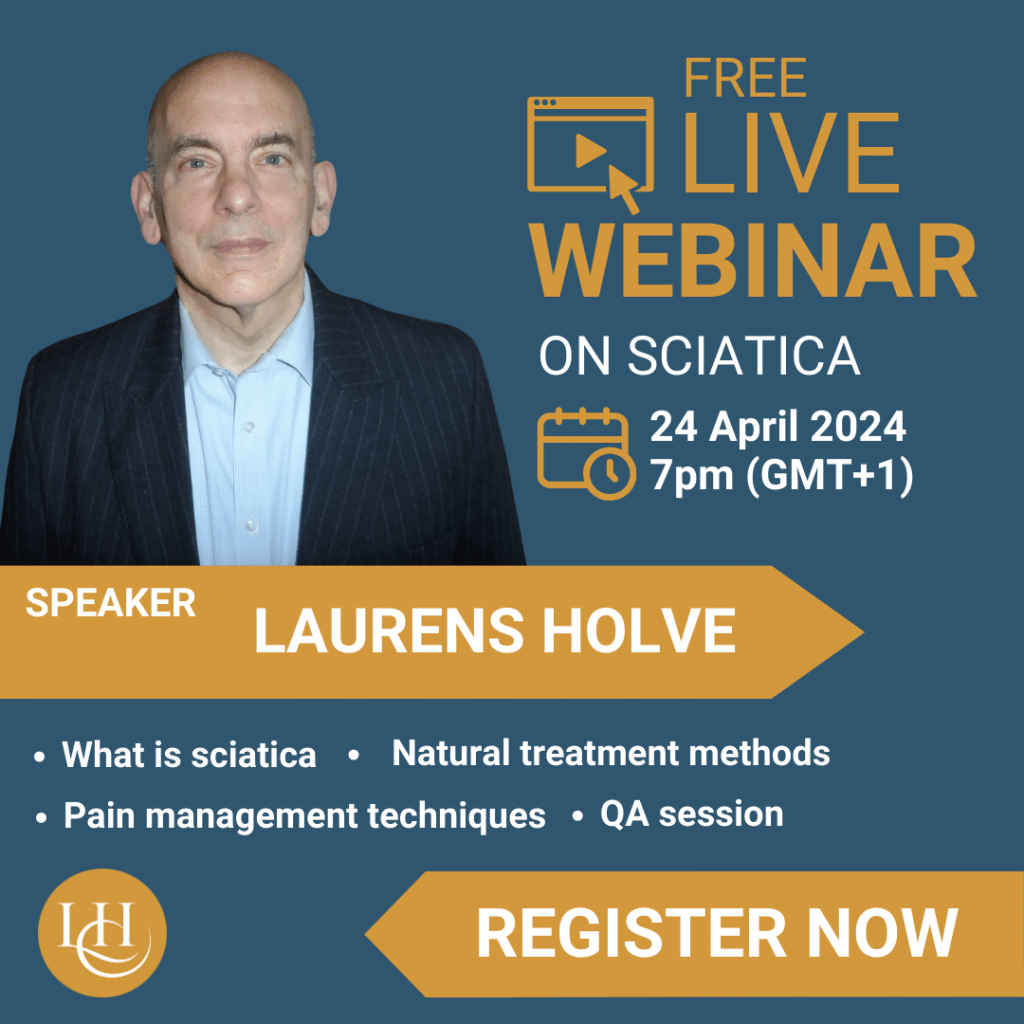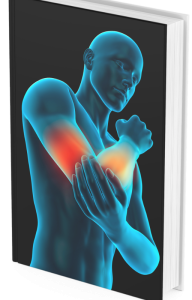What is Sciatica?
You are attending the Laurens Natural Remedies for Sciatica webinar, where Laurenswill be discussing various aspects of sciatica for the next 20-30 minutes. If you have any questions or topics you’d like to discuss, feel free to drop them in the comments or send an email to Chris at Chris@marketycliniconline.com. Lawrence aims to dispel myths surrounding sciatica and provide you with valuable insights to help you feel optimistic about managing this condition.
Definition of Sciatica as a Symptom
Lawrence begins by explaining that
sciatica is characterized by irritation of the sciatic nerve, which is the largest nerve in the human body. It consists of nerve roots L4, L5, S1, S2, and S3. Sciatica is not a specific diagnosis but rather a symptom indicating compression or inflammation of the sciatic nerve.
The Anatomy of the Sciatic Nerve
The anatomy of the sciatic nerve plays a pivotal role in sciatic pain. Understanding that the sciatic nerve originates from the lower back and runs down the back of each leg helps in grasping the nature of sciatic pain. It is vital to differentiate true sciatica, characterized by compression and pain radiating down the leg, from referred pain or hip pain, which may present similar symptoms but require different treatment approaches.
Differentiating True Sciatica
Lawrence emphasizes the importance of accurate diagnosis to tailor appropriate treatment for true sciatica. Various causes, including disc prolapse, facet joint irritation, tumors (though less common), and spinal stenosis due to osteoarthritis, can lead to sciatic pain. Recognizing red flags like cauda equina syndrome and neurological deficits is crucial for determining the need for urgent medical intervention.In conclusion, gaining insights into the symptomatology of sciatica, understanding its anatomical implications, and distinguishing it from other forms of leg pain are vital steps in effectively managing this condition. By ensuring accurate diagnosis and individualized treatment, you can navigate the complexities of sciatica with confidence and optimism.
Identifying Sciatica Symptoms
Welcome to the Lawrence Natural Remedies for Sciatica webinar, where Lawrence will delve into various aspects of sciatica in the next 20-30 minutes. If you have any queries or topics to discuss, feel free to drop them in the comments or send an email to Chris at Chris@marketycliniconline.com. Lawrence aims to demystify sciatica and provide valuable insights to help you feel optimistic about managing this condition.Sciatica is characterized by irritation of the sciatic nerve, the largest nerve in the human body, comprising nerve roots L4, L5, S1, S2, and S3. It is not a specific diagnosis but a symptom indicating compression or inflammation of the sciatic nerve. Distinguishing between true sciatica and referred pain is crucial. While both may present similar symptoms, true sciatica involves compression and pain radiating down the leg, necessitating different treatment approaches.The primary causes of sciatica include disc prolapse, facet joint irritation, tumors (though rare), and spinal stenosis due to osteoarthritis. Accurate diagnosis is vital to tailor appropriate treatment. Red flags such as cauda equina syndrome and neurological deficits like foot drop require immediate surgical evaluation based on MRI findings.Lawrence discusses conservative treatments such as anti-inflammatories and pain medications prescribed by GPs. He also elaborates on his specialized treatments like osteopathy and medical acupuncture. Osteopathic manipulation aims to mobilize the spine and joints gently to relieve muscle spasm, enhance blood flow, and improve nerve function.Neurogliding plays a crucial role in managing sciatica. Lawrence emphasizes the importance of individualized care based on symptoms and potential complications. By the end of the webinar, you will gain a better understanding of sciatica, its management, and the significance of seeking appropriate treatment for optimal outcomes.Professional treatment combined with daily exercises can help manage sciatica effectively. Stay active and avoid prolonged inactivity. Simple exercises such as knee hugs and leg side-bending stretches aid in maintaining lumbar spine mobility.If conservative treatments fail, further evaluation through MRI scans may be necessary. In severe cases, spinal injections or surgery, usually a last resort, may be recommended. It is essential to work closely with healthcare providers to alleviate symptoms and improve the condition.Lawrence reviews cases through MRI and EMG results for the best course of treatment. Surgery or radiofrequency ablation may be considered in some cases. Choosing the right mattress, staying active, and seeking treatment promptly are key in managing sciatica.Encouraging a positive mindset, monitoring progress, and exploring suitable therapies are essential in coping with sciatic pain. A tailored treatment plan and collaboration with healthcare providers can lead to improved condition and symptom relief.Ensure practitioners are qualified in osteopathy and acupuncture for effective treatment. Acupuncture stimulates nerve pathways, aiding in pain relief and overall well-being. By understanding the mechanisms behind acupuncture, informed decisions can be made about incorporating it into your healthcare routine.Regular acupuncture sessions can alleviate pain, stimulate a healing response, and ultimately improve quality of life. With a comprehensive approach to treatment, acupuncture and osteopathy can be effective in managing sciatica symptoms and promoting overall well-being.Maintain an open-minded approach to treatments, monitor progress, and seek guidance from reputable practitioners to find the most suitable therapy for your condition. Remember, managing sciatica requires patience, tailored care, and a proactive approach towards healing.
Natural Remedies for Sciatica
Welcome to the Laurens Sciatica webinar, where you will delve into various aspects of sciatica for the next 20-30 minutes. If you have any questions or topics you’d like to discuss, feel free to drop them in the comments or send an email to Chris at Chris@marketycliniconline.com. Lawrence aims to dispel myths surrounding sciatica and provide you with valuable insights to help you feel optimistic about managing this condition.Sciatica is characterized by irritation of the sciatic nerve, the largest nerve in the human body composed of nerve roots L4, L5, S1, S2, and S3. It is crucial to differentiate between true sciatica, indicating compression and pain radiating down the leg, and referred pain or hip pain, which may present similar symptoms but require different treatment approaches.The main causes of sciatica include disc prolapse, facet joint irritation, tumors (though less common), and spinal stenosis due to osteoarthritis. Accurate diagnosis is essential to tailor appropriate treatment. Red flags such as cauda equina syndrome and neurological deficits like foot drop require immediate attention based on MRI findings.
The Role of Anti-Inflammatory Medications and Their Limitations
Conservative approaches like anti-inflammatories and pain medications prescribed by GPs are commonly used to manage sciatica symptoms. However, there are limitations to their effectiveness, especially in severe cases.
Osteopathy and its Benefits for Sciatica Sufferers
Osteopathic manipulation aims to mobilize the spine and joints gently to alleviate muscle spasm, improve blood flow, and promote nerve function. Laurens explains the mechanisms behind osteopathic techniques and their effectiveness in managing sciatica symptoms.
Medical Acupuncture as a Complementary Treatment for Sciatica
Acupuncture, strategically placing needles into muscles, can stimulate small nerves blocking pain receptors, promoting muscle relaxation and pain relief. The combination of osteopathy and acupuncture can effectively alleviate pain and discomfort caused by sciatica.Remember to incorporate exercises into your daily routine to help manage sciatica. Stay active and avoid prolonged periods of inactivity. Simple exercises like knee hugs and leg side-bending stretches can maintain mobility in the lumbar spine and provide relief. Listen to your body and avoid overexertion for gradual progress in recovery.Monitoring progress and being open to trying different therapies can help find the most suitable treatment for your condition. Seek reputable practitioners and consider the effectiveness of each treatment method to effectively manage sciatica symptoms.Ensure that practitioners are properly qualified in osteopathy and acupuncture to provide effective treatment. Finding the right practitioner may require some trial and error but engaging in conversations and taking recommendations can lead to the best fit for your needs.
Exercises to Alleviate Sciatic Pain
Welcome to the Laurens Natural Remedies for Sciatica webinar, where you will delve into various aspects of sciatica for the next 20-30 minutes. If you have any questions or topics you’d like to discuss, feel free to drop them in the comments or send an email to Chris at Chris@marketycliniconline.com. Lawrence aims to dispel myths surrounding sciatica and provide you with valuable insights to help you feel optimistic about managing this condition.Sciatica is characterized by the irritation of the sciatic nerve, which is the largest nerve in the human body, consisting of nerve roots L4, L5, S1, S2, and S3. It is crucial to differentiate between true sciatica, indicating compression and pain radiating down the leg, and referred pain or hip pain, which may present similar symptoms but require different treatment approaches.The main causes of sciatica include disc prolapse, facet joint irritation, tumors (though less common), and spinal stenosis due to osteoarthritis. Accurate diagnosis is essential to tailor appropriate treatment. Red flags such as cauda equina syndrome and neurological deficits like foot drop require immediate attention and may necessitate surgical evaluation based on MRI findings.Conservative treatment approaches include anti-inflammatories and pain medications prescribed by GPs. Specialized treatments like osteopathy and medical acupuncture aim to alleviate muscle spasm, improve blood flow, and promote nerve function. Osteopathic manipulation gently mobilizes the spine and joints to manage sciatica symptoms effectively.Neurogliding and osteopathy have shown success in treating straightforward cases of sciatica. Individualized care based on the specific presentation of symptoms is crucial for optimal outcomes. Additionally, a series of sessions can gradually improve nerve function, but caution is advised to prevent flare-ups and discomfort.Acupuncture, a significant part of sciatica treatment, stimulates small nerves to block pain receptors, promoting muscle relaxation and pain relief. Combining osteopathy and acupuncture can effectively alleviate the pain and discomfort caused by sciatica.
- Staying active and avoiding prolonged periods of inactivity is crucial for managing sciatica.
- Simple exercises like knee hugs and leg side-bending stretches can help maintain mobility in the lumbar spine and provide relief.
- Listening to your body and avoiding overexertion are key to gradual recovery.
If sciatica does not respond to conservative treatments, further evaluation through MRI scanning may be necessary. In some cases, spinal injections or surgery may be recommended as last resorts after exhausting all other options.Choosing the right mattress, monitoring symptoms, and seeking appropriate treatment can help effectively manage sciatic pain. Encouraging positivity, seeking realistic expectations, and exploring different therapy options are essential for recovery.For those considering osteopathy and acupuncture, finding qualified practitioners and suitable treatment methods is crucial. Monitoring progress and being open to trying various therapies can lead to finding the most effective treatment for sciatica.Remember, seeking appropriate treatment and staying proactive in managing sciatica are paramount for improving your condition and alleviating symptoms.
When to Seek Professional Help
Welcome to the Lawrence Natural Remedies for Sciatica webinar, where you will gain valuable insights into recognizing the signs that indicate the need for professional intervention. Lawrence will address various aspects of sciatica, providing you with information to make informed decisions about seeking medical treatments, including surgery, if necessary.Symptoms such as pain radiating down the leg, foot drop, or hip pain may signify the presence of sciatica. Understanding these signs is crucial in determining when to seek professional help to address the underlying issues affecting the sciatic nerve. Lawrence will guide you through the diagnostic process and highlight red flags that warrant immediate attention and possible surgical evaluation based on MRI findings.Exploring medical treatments, Laurens will discuss conservative approaches like anti-inflammatories and pain medications, as well as specialized treatments such as osteopathy and acupuncture. These therapies aim to alleviate muscle spasm, improve blood flow, and promote nerve function, ultimately enhancing your quality of life.The importance of timely action cannot be overstated when it comes to preventing long-term complications associated with sciatica. By working closely with healthcare providers and following a comprehensive treatment plan tailored to your specific symptoms, you can effectively manage sciatica and alleviate discomfort.Remember, your journey towards recovery may involve a series of sessions to gradually improve nerve function. Alongside professional treatment, incorporating daily exercises like knee hugs and leg side-bending stretches can help maintain mobility and support your healing process. Listening to your body and seeking appropriate help when needed are key aspects of managing sciatica.In the event that conservative treatments prove ineffective, further evaluation through MRI scanning may be necessary to guide the next steps in treatment. Although surgery is considered a last resort, it can provide long-term relief for individuals who do not respond to non-invasive therapies. Lawrence will discuss the criteria for surgical intervention, ensuring you are well-informed about the potential options available.Choosing the right mattress and exploring alternative therapies like acupuncture can also complement your treatment plan. While a firm mattress is generally recommended for back support, acupuncture can offer pain relief and promote healing through its effects on nerve stimulation. Lawrence will provide insights into these complementary approaches to enhance your overall well-being.By engaging with reputable practitioners and staying proactive in your healthcare journey, you can navigate the complexities of sciatica treatment with confidence. Lawrence’s expertise and guidance will empower you to make informed decisions about your health and well-being, paving the way for a smoother recovery process.





